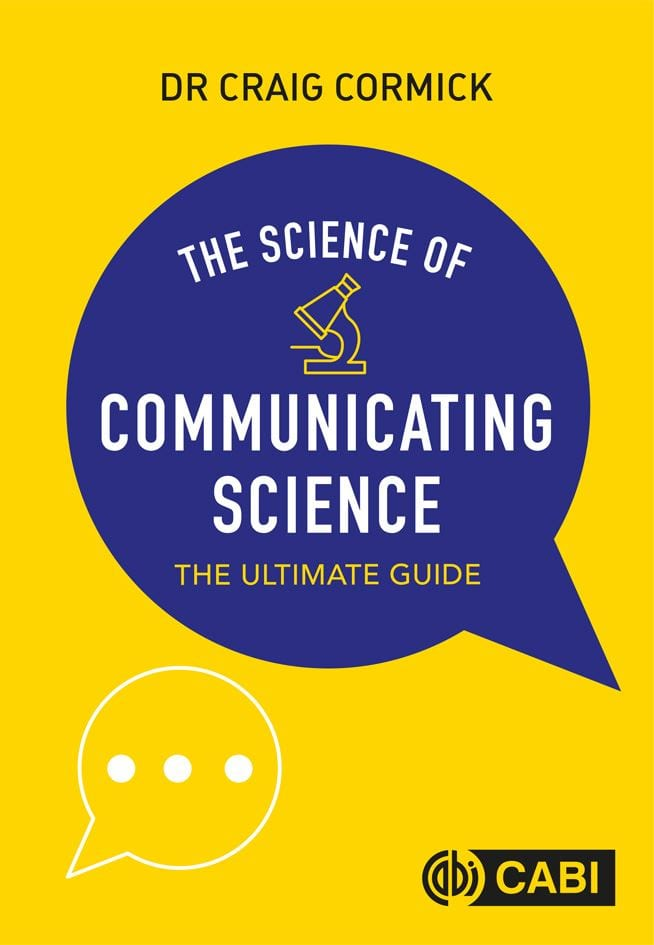The Science of Communicating Science
Dr Craig Cormick’s The Science of Communicating Science promises “a rare book that combines academic rigour with the ease of reading a blog” – and it delivers. An easy-reading, funny, self-conscious miscellany, this text contains peer-reviewed wisdom on functional science communication techniques and affirms best practice strategies for the seasoned communicator.
At times, of course, it suffers the pitfalls of trying to match two forms, and the style is too frequently punctuated with puns and cartoon images. Although the chapters cover different topics (storytelling, media, risk…) the book is designed to be read systematically and in its entirety. Indeed, this is self-proclaimed in “Chapter 19: Valuing Values”, when it states most of the relevant content has already been covered.
At times, of course, it suffers the pitfalls of trying to match two forms, and the style is too frequently punctuated with puns and cartoon images. Although the chapters cover different topics (storytelling, media, risk…) the book is designed to be read systematically and in its entirety. Indeed, this is self-proclaimed in “Chapter 19: Valuing Values”, when it states most of the relevant content has already been covered.
|
Specific advice
This text undeniably brings something utterly new to the literature: specific advice. There are numerous useful lists and examples, from body language to community engagement strategies. Disappointingly, much of the “science” is dubious opinion polls plucked at random from Australian, UK and US sources (although their limitations are acknowledged). More favourably, references are made to psychological and behavioural studies on motivated reasoning, information overload, value judgement, and the nuance of word choice for framing a concept. This material could be enriched with neuroscientific content, such as how stories affect the brain. Industry problems in science The target audience is primarily scientists obliged to do public engagement. As such, this book uniquely (and perhaps incidentally) highlights some of the key pitfalls, including (but not restricted to): |
- Data reproducibility challenges
- Poor quality or fudged statistics
- Gender bias in career progression
- Scientific reluctance to admit failure
- Overrepresentation of cultural outliers (WEIRD Americans) in behavioural studies
- Funding models
- Media relations
- Impact and evaluation
Media
This section contains a robust guide on how to construct press releases, but has gaps, such as the differences between public and scientific writing, and any reference to the 2011 BBC Trust Review, which first highlighted the partiality of reporting conflicting opinions in non-representative ways.
Public Disillusionment
Science communication is not only about speaking, but also listening: this marginalised aspect is carefully dissected. Where implementing science requires sensitive community engagement, Cormick reframes risk communication as a people-managing process. Be “a person first and a scientist second”, he advises. “People don't care what you know – they want to know you care!” Trust, he claims, is paramount. However, the nature of this public and the community power struggles which often conflate scientific consultancy are also neglected.
Conclusions
Overall, whilst there are subtle contradictions in the text, Cormick provides a well-referenced, highly specific text based on a well-founded body of established scientific knowledge that fills several gaps in the existing literature. Most memorable are the first and last things said – or, so the book tells us.
References
- Craig Cormick, The Science of Communicating Science The Ultimate Guide, CSIRO, Australia, 2019, ISBN: 9781789245141
- Professor Steve Jones, The BBC Trust Review of Impartiality and Accuracy of the BBC’s Coverage of Science, July 2011, Independent Assessment, Imperial College London. Available as a pdf online.


